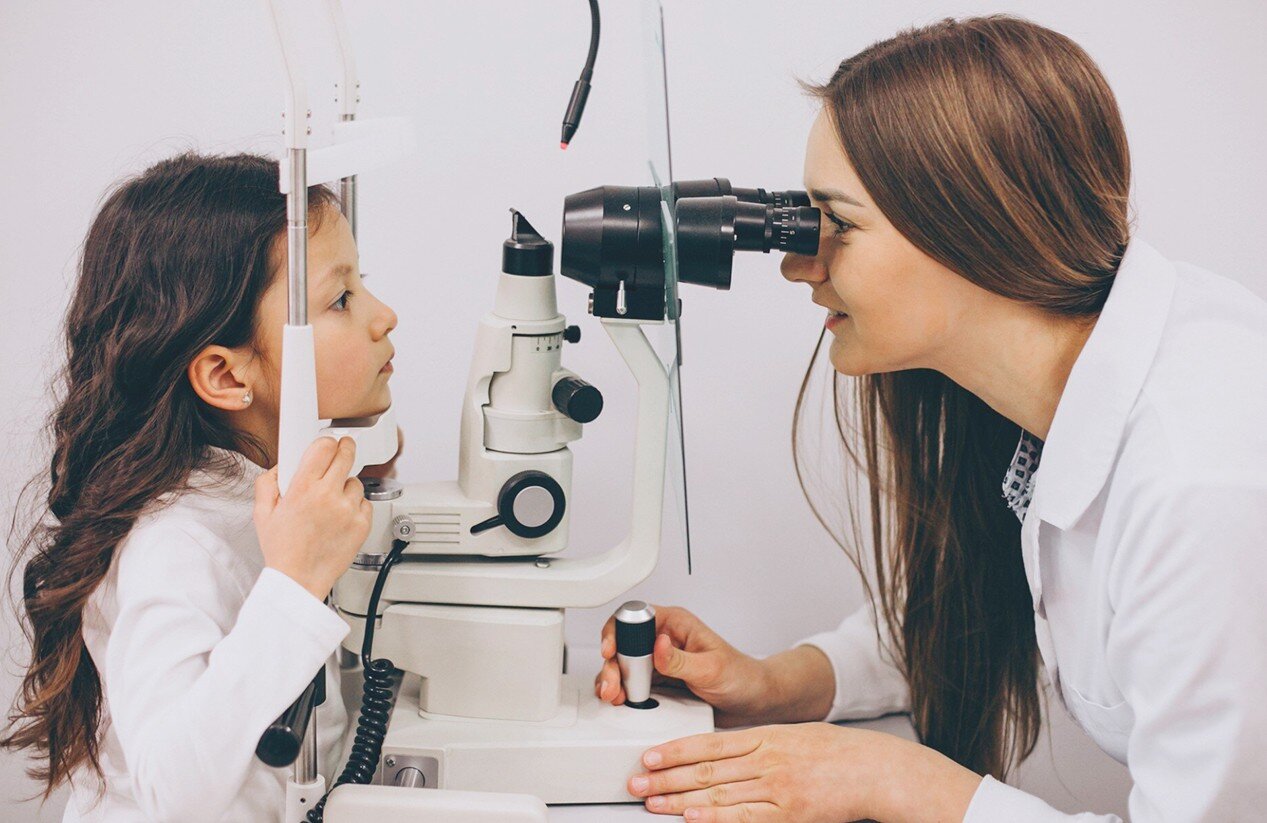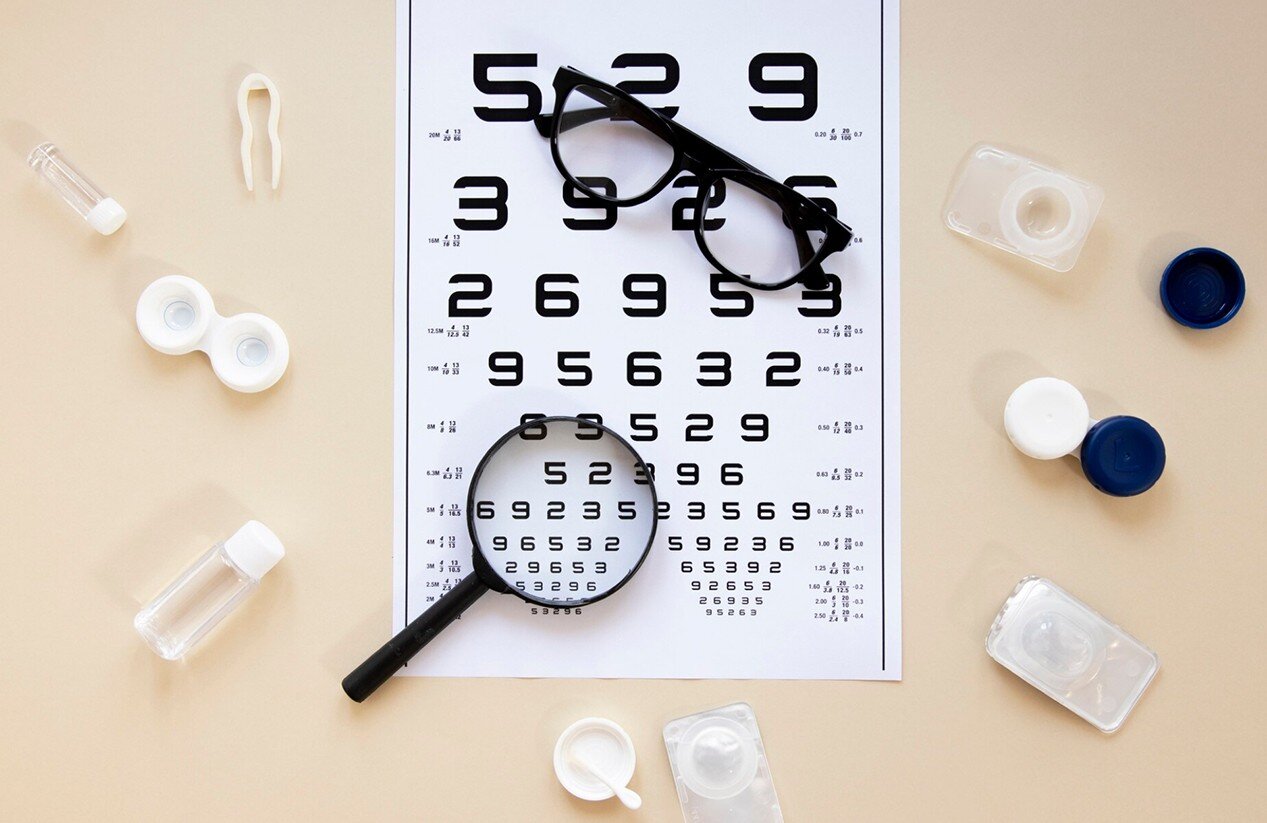- GlassesShop By FrameShop By StyleFeatured












Eye exams are key to keeping your vision sharp and your eyes healthy. Whether you’re going in for a routine check-up or something more detailed, it helps to know how long it might take—so you can plan your visit with confidence.
A full, comprehensive eye exam usually takes anywhere from 45 to 90 minutes, depending on your needs.
You’ll go through several vision and eye health tests, but the exact time can vary based on a few things, like:
Filling out medical or insurance forms when you arrive
Talking with your doctor about symptoms or health changes
Needing pupil dilation for a deeper retinal check
Having a more complex eye condition that requires extra testing
Getting a contact lens fitting
Taking time to browse for new glasses or sunglasses after your exam
In general, plan for at least an hour, especially if this is your first visit or you haven’t had an eye exam in a while.
Not all eye exams are the same. The kind of exam you need will affect how long you're at the eye doctor’s office.
This is your standard “check everything” appointment. It checks vision, eye pressure, retina health, and screens for eye diseases. These exams usually last 30 to 60 minutes, but they can go up to 90 minutes or more with added tests or dilation.
Designed for kids, these exams focus on development and early vision issues. They typically last about 30 minutes, though younger kids might need more time depending on how well they cooperate.
For patients with conditions like diabetes, glaucoma, or other eye health concerns, the doctor may run specific tests, which can add extra time.

Several factors can stretch the length of your visit:
Eye dilation – Adds 15–30 minutes while your pupils widen so the doctor can check the retina thoroughly
Contact lens fitting – If you’re new to contacts or trying a new type, your optometrist will take extra time to measure your eyes, teach you how to wear and clean the lenses, and maybe even have you test a few pairs
Shopping for glasses – If you plan to get new frames or sunglasses, browsing and fitting can add extra time
Health conditions – Diabetes, high blood pressure, or a history of eye disease may require additional evaluations
Here’s what usually happens during a full eye exam:
Visual Acuity Test – You’ll read letters on a chart to measure how well you see at various distances
Refraction Test – Helps determine your prescription using a phoropter (that big lens machine)
Eye Pressure Test – Measures the pressure inside your eye (important for catching glaucoma)
Slit Lamp Exam – Uses a special microscope and light to check the front parts of your eye (like the cornea and iris)
Peripheral Vision Test – Checks your side vision, which is useful for spotting signs of glaucoma
Retinal Exam – The doctor uses lenses or imaging tools to look at the back of your eye and spot early signs of disease
Dilation allows the optometrist to take a close look at the inside of your eye. It’s especially helpful for detecting conditions like retinal detachment, macular degeneration, and diabetic retinopathy.
Dilation takes 15–30 minutes to kick in
Your pupils will stay wide and light-sensitive for a few hours afterward
Not every exam includes dilation—it depends on your age, risk factors, and symptoms
If your doctor recommends dilation, plan for extra time and bring sunglasses for after the appointment.
If you’re planning to wear contacts, you’ll need a separate fitting. This process includes:
Measuring your eye size and shape
Trying different lenses for comfort and vision quality
Learning how to insert, remove, and clean the lenses
Scheduling a follow-up visit if needed
This can add 30 minutes or more, especially for first-time wearers.
Before Your Exam
You’ll likely fill out some paperwork covering your medical and vision history, insurance info, and any symptoms or lifestyle needs. The more detail you give, the better your eye doctor can tailor your care.
After Your Exam
You’ll go over the results with your optometrist, ask questions, and discuss any recommendations—whether that’s a new prescription, further tests, or simply keeping up with routine care. If you need glasses, you can try on frames and get help choosing lenses that fit your needs.

How often should you get an eye exam?
Adults: Once every 1–2 years, or annually if you wear glasses or have risk factors
Children: First exam between 6–12 months, again before school starts, then annually
People with health conditions like diabetes may need more frequent checkups
What are signs you need an eye exam?
Blurred vision
Frequent headaches
Squinting or eye strain
Trouble seeing up close or far away
Light flashes, floaters, or sudden vision changes
If you notice these symptoms, don’t wait—book an appointment.
Why are regular eye exams important?
Eye exams don’t just update your prescription—they detect early signs of serious issues like glaucoma, cataracts, and macular degeneration. They can even spot signs of diabetes or high blood pressure, making them important for your overall health.
Once your exam is done and your prescription is updated, it’s time for the fun part—choosing new glasses or contacts that fit your life and style.
At EFE Glasses, we offer affordable, high-quality eyewear designed to suit every face and every need. From blue light glasses for screen time to stylish progressives for everyday wear, we’ve got you covered.
Clearer vision starts here. Book your eye exam, then check out our latest styles made to keep you seeing—and looking—your best.

